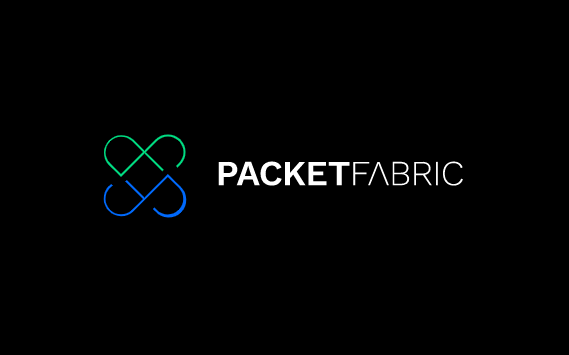Why a Packet Fabric acquisition of Rstor is Good for Cloud
PacketFabric announced it acquired Rstor today in a move that should bolster both organizations to deliver fast, reliable networking of cloud traffic and infrastructure. Today, many organizations are faced with the Cloud Networking challenge of staying on-prem, going all-in on cloud resources or having a hybrid approach. Covid shined the light for many IT organizations who had large corporate WANs routing between offices/nodes globally only to find employees immediately required access from their remote home office. VPNs, re-routes, traffic tromboning, and more began as network teams were faced.
Companies quickly lifted and shifted applications, contact centers, and other resources into more cloud instances, sometimes multiple providers. However, in the swiftness of change, teams did not realize what they were losing from a traditional carrier SDWAN. Often, they did not have to architect a truly low-latent, cost-effective cloud networking path for the remote users across the ether. PacketFabric has been solving Public Cloud and Data Center connectivity options across their independent private backbone to accommodate this challenge.
Why is the Rstor acquisition by PacketFabric a good move in the cloud networking ecosystem? Let’s dive in first on a brief background of both organizations and how this can benefit IT teams. For many stand-alone network organizations, delivering connectivity with a cloud infrastructure as an option is really an ideal scenario.

Who is Rstor & what does PacketFabric provide on top of their offering?
Space: Their RSTOR Space product boasts super-fast stating it is 10x faster compared to Amazon S3 which is impressive. It’s an Object Storage based environment with predictable pay-as-you-go cloud costs posted on their website. Additionally, their Space environment is geolocated across the globe providing availability not just in your home region.
PacketFabric Advantages:
- Connecting to Space (this sounds like NASA stuff) on Rstor must happen with carrier-grade precision. Queue PacketFabric to deliver Point to Point or their Cloud Router option for lightning speed.
Rstor’s Space offering also provides 11 9’s….99.9999999 which is as close to 100% as you’ll find in the cloud wars generally. Another key feature of this environment is there are no egress/ingress charges as data routes between their infrastructure. Unlike many of the traditional public cloud providers who charge nominal fees for data leaving their environment, Rstor does not.
PacketFabric Advantage
- The ability to route traffic using a private connection at Layer 1/2 using layer 3 protocols while not having to explain to customers the dilution of egress charges is a plus. PacketFabric equally can leverage its large customer base to discuss Object Storage options as a turn-key approach
Rstor also provides its Transporter product which provides an option to move objects across in-tow storage buckets or those residing with other clouds. The service certainly touts an easy setup process: Identify your source bucket and begin authentication then select your destination bucket and begin its authentication. As everything completes from a security perspective, that it’s you are finished which makes this process for dev teams extremely easy to deploy.
PacketFabric Advantage
- Turning up Transporter will get easier once both organizations combine the products together. PacketFabric brings years of private software-defined cloud connectivity options for customers and continues its reach across the world. Overlaying Transporter on the PacketFabric backbone and deploying the service which is simple to deploy as previously discussed will deliver great results. For one, customers can experience ongoing network support and excellent SLAs while continuing to deploy Transporter’s easy-to-use offering. Transporter now can reach much further for clients regardless of their workload requirements in various public clouds.
Finally, as you evaluate this acquisition, it’s clear PacketFabric has a good vision to diversify its portfolio of cloud connectivity. Learning from prior carrier mistakes, they have surgically chosen an acquisition key for their customer base vs. trying to take on a complete public cloud offering as others failed to do in the past.
If you are interested in a demo of PacketFabric and how to connect privately across your public cloud or datacenter footprint, please contact us. One of our architects will align a brief discussion and you would be amazed how quickly their environment builds….no more pounding on the command line or having to be a CCIE any longer!
Recent Posts
- AI-Powered Humanoid Robots: Transforming Business, Homes & Connectivity
- Top IT & Network Design Consultants in Boston and New England: Macronet Services
- Top AI Consultants in New England: Why New Hampshire’s Macronet Services Shines in Boston and Beyond
- IXPs in the US and Internet Peering
- Top Tips for a Winning Agentic AI Contact Center for 2025
Archives
- June 2025
- May 2025
- April 2025
- March 2025
- February 2025
- January 2025
- December 2024
- November 2024
- October 2024
- September 2024
- August 2024
- July 2024
- June 2024
- May 2024
- April 2024
- March 2024
- February 2024
- January 2024
- December 2023
- November 2023
- October 2023
- September 2023
- August 2023
- July 2023
- June 2023
- May 2023
- April 2023
- March 2023
- February 2023
- January 2023
- December 2022
- November 2022
- October 2022
- September 2022
- August 2022
- July 2022
- June 2022
- May 2022
- April 2022
- March 2022
- February 2022
- January 2022
- December 2021
- November 2021
- October 2021
- September 2021
- August 2021
- July 2021
- June 2021
- May 2021
- April 2021
- March 2021
- December 2020
- September 2020
- August 2020
- July 2020
- June 2020
Categories
- Uncategorized (1)
- Security Services (71)
- Cloud SaaS (60)
- Wide Area Network (307)
- Unified Communications (196)
- Client story (1)
- Inspiration (9)
- Tips & tricks (25)
- All (19)
- Clients (12)
- Design (3)
- News (270)
- Music (1)
- Sports (1)
- Travel (1)
- Artificial Intelligence (3)




